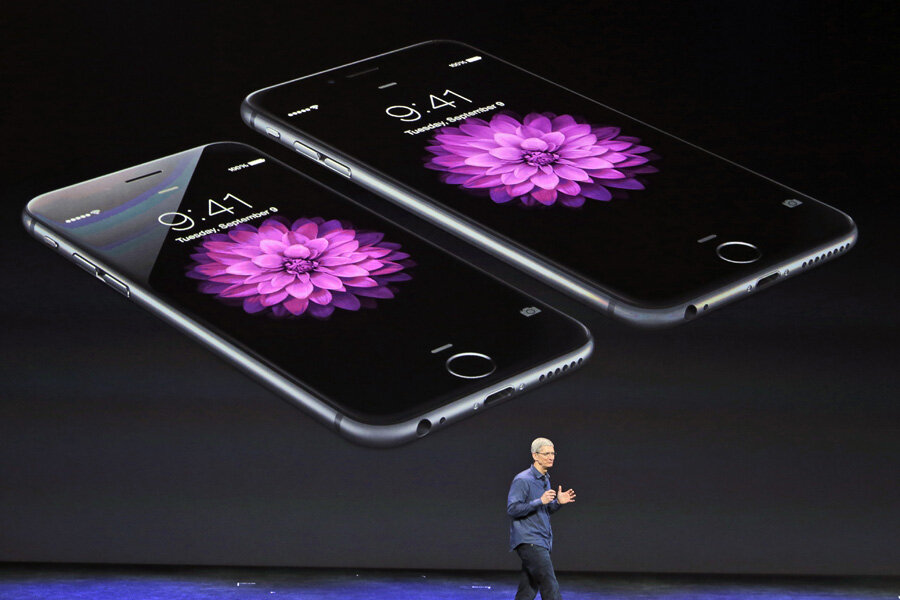iPhone 6 and iPhone 6 Plus neutralize Samsung's 'key advantage'
Loading...
| CUPERTINO, Calif.
Apple presented the next generation of its iPhone — two larger models that reflect the company's attempt to catch up with rivals that have been winning over fans with bigger screens that enhance videos and game playing.
The bigger iPhones are expected to unleash pent-up demand among Apple zealots who have been pining for a larger screen, virtually assuring the new models will be a hot commodity this fall and through the crucial holiday shopping season.
The iPhone 6 will feature a 4.7-inch screen, up from the 4-inch screen on the models released in each of the previous two years. The iPhone 6 Plus will boast a 5.5-inch screen and other improvements, including longer battery life, that will cost an additional $100. The screen resolution on the Plus version will be sharper than previous iPhones.
With the larger screen comes a new horizontal view of the home screen. Usually, icons are stacked vertically, even when the phone is turned horizontally. App developers will also have new tools to rearrange their content to take advantage of that larger screen.
The new phones are not as big as Samsung's latest flagship phones — 5.1 inches for the Galaxy S5 and 5.7 inches for the Note 4 — but they will be large enough to neutralize a key advantage Samsung and other Android manufacturers have had.
Notably, Samsung's Note phone isn't getting bigger this year. Last year's Note 3 was 5.7 inches. Instead, Samsung is emphasizing other hardware features, such as a sharper screen. It's also releasing a model with a curved edge to display weather, time and other information on the side of the phone.
Apple says the new phones will be faster and have better battery life than previous versions. The phones will also have a barometer to estimate how much users climb stairs, not just how far they walk or run.
Of course, some people still use their phones to make calls. So when there's poor cellular reception, iPhone owners will be able to make regular calls over Wi-Fi. The handoff between the two networks will be seamless. In the U.S., this feature will initially be available through T-Mobile.
The resolution on the camera is staying at 8 megapixels, while rival Android and Windows phones have been offering up to twice that amount. However, the number of megapixels is only one factor in what makes a good photo. Apple says it is putting in new sensors for better shots.
Apple is also improving a slow-motion video feature by allowing even slower shots. The camera will be able to take 240 frames per second, double what's in last year's iPhone 5s. Normally, video is at 60 frames per second.
The new phones will start shipping in the U.S. on Sept. 19, with advance orders to begin this Friday. Starting prices will be comparable to those in the past — $199 with a two-year contract for the iPhone 6 with 16 gigabytes of storage.
However, the step-up models will have double the memory as before — $299 for 64 gigabytes and $399 for 128 gigabytes. The iPhone 6 Plus phones will cost $100 more at each configuration.





